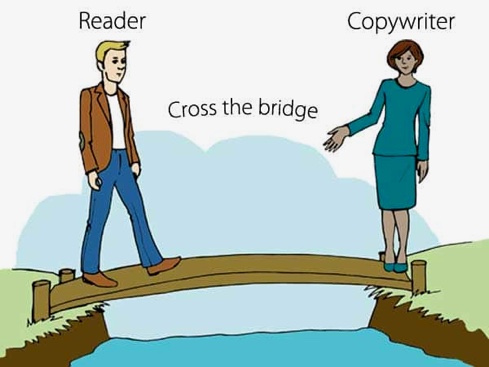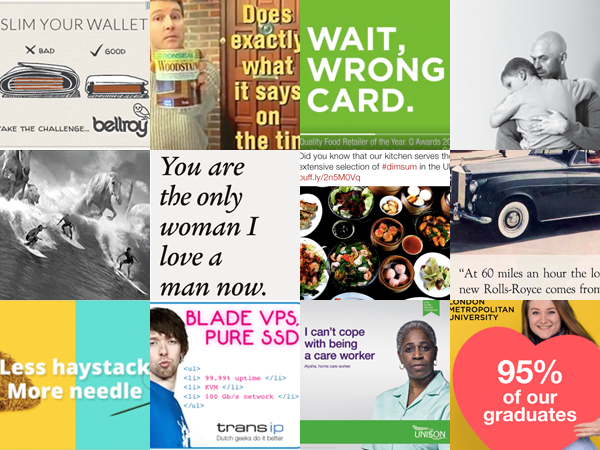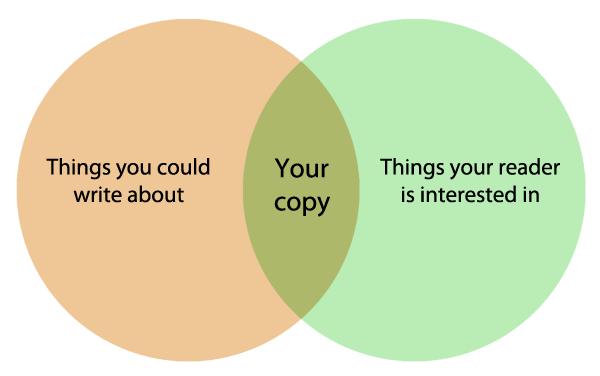Books
Copywriting Made Simple: Chapter 1
What is copywriting?
There are lots of reasons to write.
You might want to tell a story. Create something beautiful. Express yourself, or share your knowledge. Or you might just enjoy the act of writing itself.
All those reasons are fine. But copywriting is something else.
Copywriting is writing with a job to do. Writing with a practical purpose. Usually, that purpose is to make the reader think, feel or act differently from the way they did before.
Copywriting is like a bridge. On one side is the person who will read your copy. On the other side is you, along with whatever you’re selling. Your job is to get the reader to cross the bridge and give it a try.
Now, the reader might not be ready to cross the bridge just yet. They might want to, deep down, but still feel unsure about taking the first step. They might be able to see the other side, or have a vague idea what’s over there. Or they might not know the bridge is there at all.
Whatever they’re thinking or feeling right now, you’ve got to change it so they act differently and cross the bridge.

Most copy is written to sell products or services, so crossing the bridge means buying or trying something. But you could also be aiming to provide information, explain ideas or build support for a cause. If so, you’re trying to get the reader to buy in rather than buy – to invest their attention or commitment instead of their cash.
Copy appears in marketing materials like adverts (printed, broadcast and online), sales letters, brochures and websites. It pops up in tweets, posts and updates. It fills articles, white papers and even whole books, as well as other types of content like video scripts and infographics. Wherever words are making things happen for businesses and organisations, that’s copywriting.
Sometimes, it can feel like technology has made reading a thing of the past. But while we certainly use many different devices and channels these days, most of what we do on them is still text-based. And marketing messages still have to be written, regardless of how and where people read them. The copywriter’s skill is as important as ever.

The challenge…
Copywriting can be tough. The search for a simple, powerful idea can be long and frustrating. Getting the right ideas in the right order can feel like doing a crossword without the clues. And once you’ve found words that are powerful and persuasive, you’ve also got to give them the right personality.
What’s more, nobody cares. Your reader isn’t eagerly waiting for your copy. In fact, they’d rather not read it at all. You have literally seconds to capture their attention before it jumps to something else.
If your reader is online, they’ve got plenty more sites to choose from if yours turns out to be dull or confusing.
If they’re on the tube, they’d rather be looking down at their Facebook than looking up at your ad.
If they’re at work, they’ve got a to-do list as long as their arm, and researching your product is just one more thing that’s been added to it.
And if they’re picking up your mailshot from the doormat, you’ve got to make your case before they make it from the front door to the recycling bin.
Does that mean copy can never work? Absolutely not. It just means you have to respect your reader, give them something interesting and always remember that they’re human.

Legendary copywriter Howard Luck Gossage said, ‘People read what interests them, and sometimes it’s an ad.’ Your job is to hit that sweet spot where what you’ve got to say meets readers’ interest – and turn that interest into action.

…and the reward
So yes, copywriting is challenging. But it’s also fun, varied and massively rewarding.
As a copywriter, you create the ideas that give marketing its soul. You decide what brands will say, and how they’ll say it. Through your copy, you connect with thousands of people out there in the world, whisper in their ear and offer them something they’ll really like. With nothing more than words on a page, you can change how they think, feel or act. How cool is that?
Then there are the discoveries. All around you, right now, are dreams made solid and real. You’ll learn the tiniest details of things you never gave a second thought, and meet people who spend their lives making them. Everywhere you look, there are products waiting to be noticed and have their stories told. You will tell those stories.
The variety can be incredible. You could be writing about diamonds or dog food one day, laptops or luggage the next. You could be thinking up a three-word tagline or dashing off a 300-page ebook. You could be having tea with the local plumber or flying off to interview the CEO of a multinational.
If you do well, you could write for a living. That’s something thousands of people dream of. You may not write the next great novel. You may not even write for a brand that anyone’s really heard of. But if you love learning, writing and making things happen, you’ll love the copywriter’s life.
And when your work is done, you’ll have the satisfaction of knowing you made a difference. Your client needed your help to capture their ideas, present their product and reach their customers. Your words helped them succeed. You matter.
